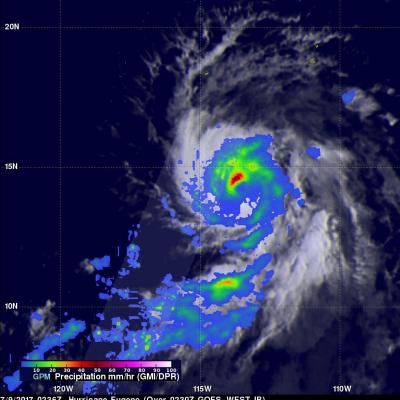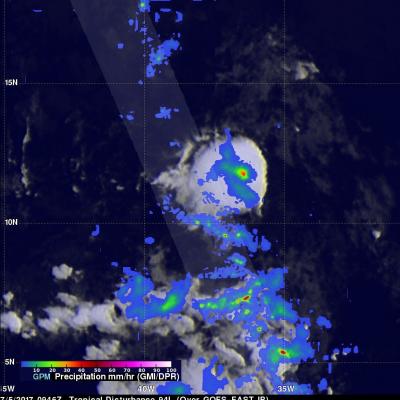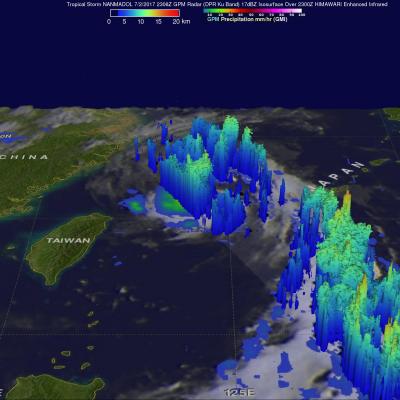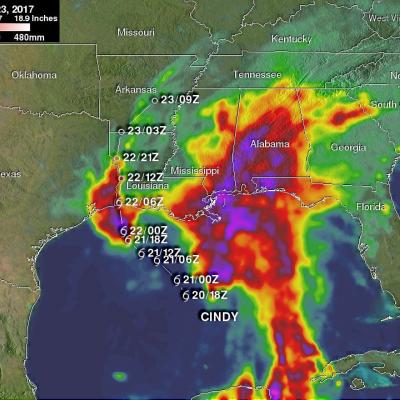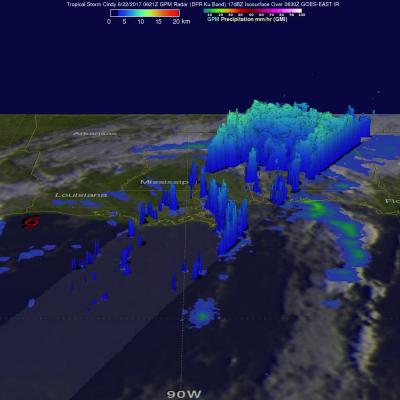Eastern Pacific Hurricane Viewed By GPM
Hurricane Eugene formed on July 7, 2017 in the eastern Pacific Ocean south of the Baja Peninsula. Eugene was intensifying when the GPM core observatory satellite flew over on July 9, 2017 at 0236 UTC. Eugene reached it's peak power later that day with it's maximum sustained wind speeds reaching about 100 kts (115.0 mph). The center of GPM's track passed to the west of Eugene's eye. Data collected by GPM's Dual-Frequency Precipitation Radar (DPR) instrument showed that powerful storms in the northwestern quadrant of the hurricane were dropping rain at a rate of over 186 mm (7.3 inches) per hour


